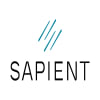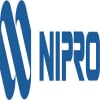Despite considerable progress, genetic medicine is still mostly limited to the treatment of rare diseases. Developers are racing to broaden its reach, with the latest entrant debuting Thursday, supported by one of the world's largest pharmaceutical companies.
The startup, Ensoma, has emerged with $70 million in Series A financing and a wide-ranging collaboration with Takeda that includes up to five experimental programs. The fundraising was led by venture capital firm 5AM Ventures as well as a half dozen other investors.
Ensoma's goal is highly ambitious. The company says it will use an unorthodox method to turn gene modifying medicines normally made through a complex, laborious process into "off-the-shelf" products. By doing so, Ensoma aims to develop treatments for common as well as rare diseases, and make them available beyond specialized centers.
"The intent of our therapy is to be able to deliver this in an outpatient setting, anywhere, even in a doctor's office or clinic," said Ensoma's executive chair Paula Soteropoulos, an industry veteran who recently ran Akcea Therapeutics.

Over the past several years, genetic medicines have shown great promise in treating a handful of rare diseases. Two such medicines, Luxturna and Zolgensma, are approved in the U.S. for eye and neuromuscular conditions, respectively. Others may soon emerge as treatment options for rare blood disorders like sickle cell disease and beta thalassemia.
Many of the treatments rely on modified viruses to shuttle genetic instructions into the body's cells — delivery vehicles repurposed from nature that come with strengths as well as weaknesses. One example, adeno-associated viruses, or AAVs, can be easily administered via infusion, have proven safe in clinical testing and are the backbone of a wide range of gene therapies.
But AAVs can only carry a small amount of genetic cargo and are sometimes shut down by the body's defenses. The DNA they transport also doesn't easily integrate into a target cell's genome, meaning the effects of AAV-based treatment may wane in cells that frequently divide.
Another commonly used option, lentiviruses, do integrate and can be used for many different tasks, such as engineering stem cells to correct or work around the defective DNA that drives certain blood diseases.
Yet lentiviruses also have limited packaging capacity. And because they readily integrate into cellular DNA, there's greater risk of erroneously triggering cancer-causing mutations, as occurred in an early 2000s gene therapy trial in France that used a different type of virus. So scientists typically make such treatments through a tightly controlled process in which cells are first extracted from the body, then precisely modified using lentiviruses in a laboratory.
These "viral vectors" have enabled gene therapy to come of age after decades of stop-and-start scientific research. But their limitations have become increasingly well understood, which is why a number of companies have emerged aiming to improve the technology and widen its impact.
The concept behind Ensoma, for instance, is to deliver a larger, and more varied, payload of gene-modifying tools than its peers have been able to do with existing viral vectors. The company is taking an adenovirus, stripping its viral genome, and using the excess space — some six or seven times the capacity of an AAV — to cram in functional genes or even the means to modify them.
Ensoma says its platform can deliver into cells genome editing technology like CRISPR/Cas9 or zinc finger nucleases, or sets of instructions for how much of a gene to express. "We can fit it all," said Kush Parmar, founding CEO and a managing partner at 5AM Ventures.

Preclinical research underlying Ensoma's approach, published in the Journal of Clinical Investigation in 2019, gave a glimpse into how the approach could be used to design a treatment for beta-thalassemia. In tests in mice, researchers used a drug to move hematopoietic stem cells from the bone marrow into the blood, where they were infected by an infused, genetically engineered adenovirus. The cells then returned to the bone marrow, where they persisted and produced corrected red blood cells.
The study was done by an international team of researchers that included the University of Washington's André Lieber, one of Ensoma's scientific founders. Hans-Peter Kiem of the Fred Hutchinson Cancer Research Center is another.
Ensoma aims to use its method to make genetic medicines for a variety of rare and common diseases. The hope is these medicines could be less cumbersome than gene-based treatments that rely on outside-the-body cellular engineering, such as the ones Bluebird Bio, CRISPR Therapeutics and others are now testing for beta-thalassemia and sickle cell disease.
Ensoma also expects to be able to avoid the "pre-conditioning" chemotherapy regimens used by Bluebird and CRISPR to prepare patients to receive their cell-based medicines. While familiar to transplant specialists, the regimen can come with side effects.
"This sounds really compelling," said Luk Vandenberghe, the director of the Grousbeck Gene Therapy Center at Massachusetts Eye and Ear. Vandenberghe, who isn't involved with Ensoma, added that the "complexity" of other approaches "often limits the reach of these therapies, even in the West."
Ensoma's method, he said, could be "really quite impactful for diseases like sickle cell" and potentially as an alternative to the logistically challenging cancer cell therapies that have come to market.
Soteropoulos, the company's chair, noted the potential advantages in convenience allows Ensoma to think about using gene therapy to address infectious diseases or autoimmune conditions.
Before that can happen, though, Ensoma has much to prove. Adenoviruses have a checkered past in gene therapy. Though they were among the first delivery tools used in clinical tests, safety concerns — most notably the death of a teenage study volunteer two decades ago — curtailed their use, ushering in the emergence of AAVs.
"Innate immunity is indeed the concern that adenovirus therapies have to address," Vandenberghe said. The challenge is to find a "good therapeutic window to avoid the issues seen in the past." Still, he noted that "the preclinical data in the literature looks promising that [Ensoma] will find such a window."
Indeed, Parmar said the viruses Ensoma is using are "gutless" and have "extremely low to negligible pre-existing immunity."
"These are not the adenoviruses of 20 years ago," he said.
That will have to be shown in animal studies and, should those look positive, human trials. Soteropoulos said the "fastest path" to clinical tests is to produce inside-the-body versions of treatments that have already shown promise via ex vivo approaches. She noted, though, that it's too early to say how far the company is from its first tests or what diseases it will initially target.
Ensoma could receive up to $100 million in upfront and near-term payments from Takeda. The startup could also earn as much $1.25 billion from the deal later on, though that cash isn't guaranteed and may not materialize.
While Takeda may seem an unusual partner, the Japanese drugmaker has been making a major push into cell and gene therapy, hoping to improve on the current crop of treatments. Its research programs, however, remain at a comparatively early stage.




















